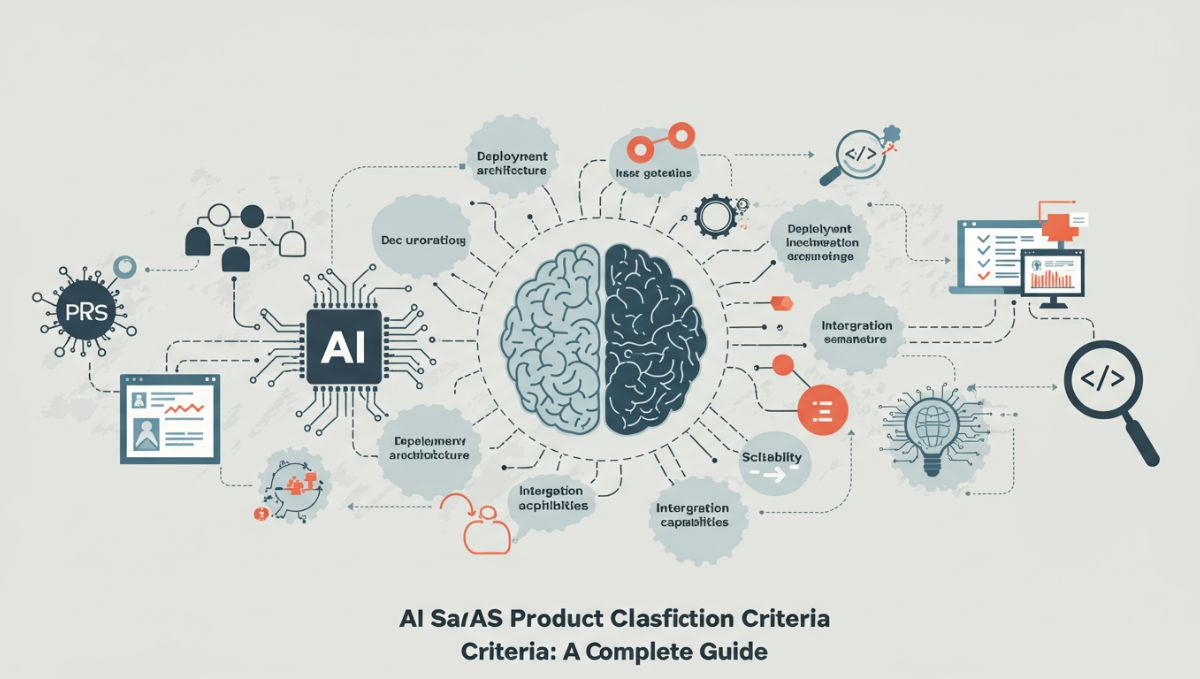Artificial Intelligence (AI) is revolutionizing the Software as a Service (SaaS) landscape, offering smarter, more scalable solutions across industries. However, with the proliferation of such tools, businesses and developers need a reliable framework for evaluating and classifying these products. This article outlines comprehensive AI SaaS product classification criteria, offering clarity for those assessing or developing AI-based SaaS tools.
Understanding the Need for AI SaaS Product Classification
As the market expands, classifying AI SaaS products becomes essential for:
-
Helping users choose the right tools
-
Supporting developers in benchmarking
-
Ensuring regulatory compliance
-
Facilitating market segmentation and positioning
Without clear AI SaaS product classification criteria, businesses may struggle to compare products, identify competitive advantages, or make informed investments.
Core AI SaaS Product Classification Criteria
1. AI Functionality Type
One of the primary classification criteria involves identifying what type of AI technology powers the SaaS product. This helps define the tool’s capabilities.
Subcategories include:
-
Machine Learning (ML)-based SaaS: Platforms that adapt over time using structured and unstructured data (e.g., predictive analytics tools).
-
Natural Language Processing (NLP) SaaS: Used in chatbots, virtual assistants, and language-based analysis platforms.
-
Computer Vision SaaS: Tools that interpret visual inputs like images and videos (e.g., facial recognition or image tagging software).
-
Generative AI SaaS: Systems that produce original content, such as text, audio, code, or images (e.g., content generation platforms).
Understanding the core AI functionality is essential for aligning tools with use-case needs.
2. Deployment and Scalability
Scalability is a key concern for SaaS products in general, and it becomes even more critical when AI workloads are involved. This classification criterion includes:
-
Cloud-native vs. hybrid deployment: Whether the tool operates entirely in the cloud or integrates with on-premises systems.
-
Elastic scalability: The ability to handle varying loads of data and requests.
-
Multi-tenant vs. single-tenant architectures: Impact performance, cost, and customization options.
SaaS tools must be evaluated based on how well they scale with increasing demands while maintaining accuracy and performance.
3. Target Industry and Domain Specialization
AI SaaS platforms are increasingly industry-specific. This classification criterion helps users identify whether a tool is:
-
General-purpose: Applicable across various domains, such as CRM tools with embedded AI.
-
Vertical-specific: Built for industries like healthcare, finance, retail, or manufacturing.
-
Use-case-driven: Tailored for specific processes like fraud detection, medical diagnostics, or customer support.
Classifying AI SaaS products by domain relevance makes it easier for businesses to find solutions aligned with their challenges.
4. Data Handling and Security Protocols
Given the sensitivity and volume of data AI SaaS tools often manage, data handling becomes a crucial classification factor.
Key sub-criteria include:
-
Data ingestion capabilities: How the tool collects and processes input data (real-time vs. batch processing).
-
Data privacy compliance: Adherence to regulations like GDPR, HIPAA, or CCPA.
-
Model explainability and transparency: Whether the AI outputs are understandable and auditable.
-
Data residency options: Location and jurisdiction of data storage and processing.
SaaS buyers, especially in regulated sectors, must scrutinize these criteria closely.
5. Customization and Model Flexibility
Different organizations have different requirements, making customization a valuable aspect of classification.
Considerations include:
-
Pre-trained vs. user-trained models: Some SaaS tools offer general-purpose models, while others allow users to train models on proprietary data.
-
APIs and SDKs: Availability of developer tools for integration and extension.
-
Modular architecture: Ability to adapt components based on specific workflows.
An AI SaaS platform that supports model retraining or fine-tuning will appeal to data-rich organizations looking for tailored insights.
6. Integration Capabilities
No SaaS tool exists in a vacuum. The ability to integrate with existing infrastructure is an essential classification criterion.
Key elements:
-
Third-party app compatibility: Integration with popular tools like Salesforce, Slack, or Tableau.
-
API availability and documentation: Determines ease of custom integrations.
-
Middleware support: Compatibility with platforms like Zapier or MuleSoft.
Tools with robust integration capabilities help organizations reduce friction and streamline workflows.
7. AI Model Performance and Metrics
Performance measurement is an advanced yet necessary classification factor. Key performance indicators include:
-
Accuracy and precision: Particularly important for classification and prediction tools.
-
Latency: Speed of data processing and output delivery.
-
False positive/negative rates: Critical in domains like fraud detection or diagnostics.
-
Model drift detection: Ability to monitor and adjust to data changes over time.
This ensures the AI within the SaaS remains reliable and relevant post-deployment.
8. User Experience and Accessibility
AI SaaS tools must balance powerful capabilities with usability. This classification criterion focuses on:
-
User interface (UI) quality: Intuitive design and layout.
-
No-code/low-code support: Enables non-technical users to build and operate AI workflows.
-
Multilingual support: Crucial for global applications.
-
Mobile accessibility: Especially important for frontline or remote workforces.
Platforms that prioritize UX can achieve broader adoption and reduce the learning curve.
9. Pricing Models and ROI Transparency
Classifying AI SaaS products by cost and return on investment (ROI) helps businesses make strategic purchasing decisions.
Pricing criteria include:
-
Subscription-based: Monthly or annual fees with tiered access.
-
Usage-based: Charges based on API calls, users, or data volume.
-
Freemium vs. enterprise plans: Product scaling for various business sizes.
-
ROI tracking features: Built-in analytics that show cost savings or performance gains.
This category helps in evaluating the total cost of ownership and long-term value.
10. Ethical AI Considerations
As AI becomes more influential in decision-making, ethics is an emerging classification dimension.
Key points to assess:
-
Bias mitigation protocols: How the tool ensures fairness in decision-making.
-
AI governance features: Policies and controls for responsible AI use.
-
Transparency reports: Documentation about model training data and outcomes.
Including ethics in classification ensures that AI SaaS tools align with organizational values and societal expectations.
Conclusion: The Importance of Robust Classification
As AI-driven SaaS tools continue to disrupt industries, the need for clear AI SaaS product classification criteria becomes even more urgent. Businesses need a framework to assess what these tools do, how they operate, and whether they align with technical needs, budget constraints, and ethical considerations.
By applying these ten classification criteria, stakeholders can better evaluate the landscape, compare offerings, and select the tools that best match their goals—whether that’s boosting productivity, enhancing customer experience, or driving innovation.
Understanding these criteria also helps developers build better, more transparent, and scalable AI products that meet market demands and future-proof their offerings in a rapidly evolving digital economy.

